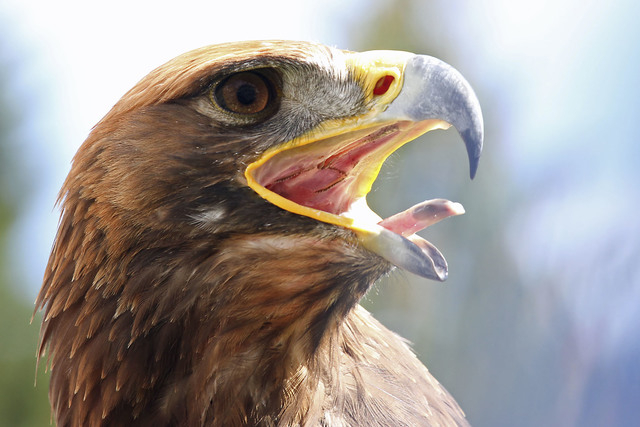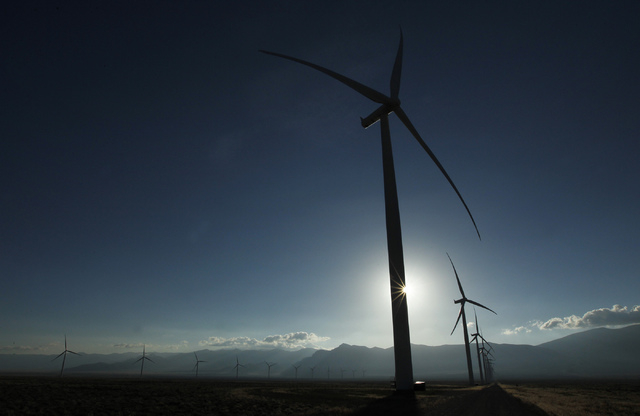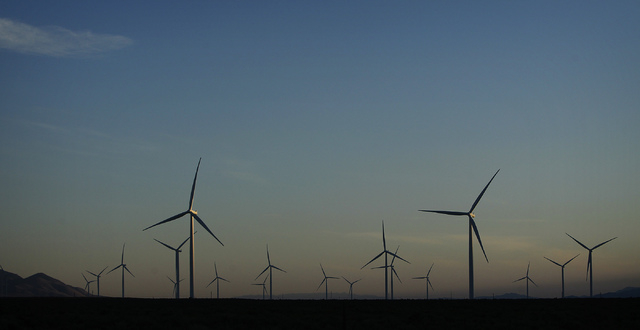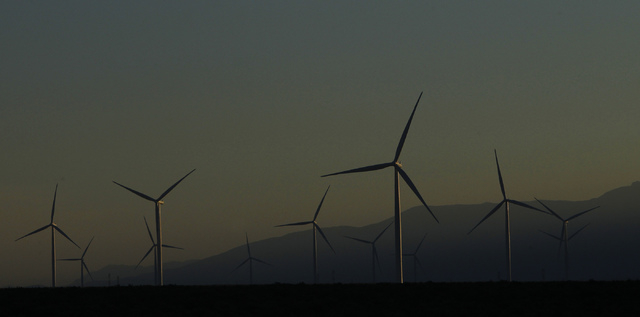Second golden eagle found dead at Nevada wind farm







Conservationists are calling for regulatory action after the death of a second golden eagle in three years at a White Pine County wind farm that sells power to NV Energy.
The body of the federally protected bird was found Feb. 9 near one of the massive turbines at the Spring Valley Wind Energy facility about 260 miles northeast of Las Vegas.
Operators of the wind farm reported the death to federal regulators and collected the juvenile bird’s carcass for further examination by U.S. Fish & Wildlife Service.
“Our folks in the regional office are aware of it, and they are consulting with the Bureau of Land Management and waiting for information from them,” said Dan Balduini, spokesman for the Fish & Wildlife Service in Nevada. “As it stands right now, we’re not taking any action until we get information that’s necessary to move forward.”
The wind farm received no penalties the last time a golden eagle was killed there, two years ago this month, even though the facility lacked a federal permit for the so-called “incidental take” of such protected birds.
In a letter to regulators, members of the Western Watersheds Project, an Idaho-based environmental group, said they were “extremely disappointed” by the second eagle death and demanded to know what would be done to prevent more.
“We expect a far more robust response to this second unauthorized kill,” the letter from group said.
Rob Mrowka, senior scientist for the Center for Biological Diversity in Tucson, Ariz., said it will be interesting to see how regulators respond to this latest incident after giving the wind farm “a free pass” the first time around.
“There is no incidental take allowed after the first eagle,” he said. “After the first eagle they have to face consequences, theoretically.”
San Francisco-based Pattern Energy owns the 152-megawatt wind farm, which features 66 turbines arrayed across more than 7,600 acres of federal land at the heart of the vast Spring Valley.
The $225 million facility went online in August 2012 as the first utility-scale wind farm in Nevada. It is designed to generate enough electricity to supply about 40,000 homes, with NV Energy as its only customer for the first 20 years of operation.
Each of the wind farm’s 262-foot towers holds a rotor the diameter of a football field. When one of its three blades is pointed straight up, the structure reaches more than 425 feet in the air, roughly the same height as the Palms casino resort. Though the blades appear to spin slowly, their tips can reach 170 mph, churning the air into tornado-like swirls that can be deadly for a bird or bat that flies too close.
Eagle deaths at wind farms nationwide have stoked debate over the environmental trade-offs associated with the sort of large-scale green energy projects championed by the Obama administration in the face of climate change.
In December 2013, the Interior Department exempted wind farms from penalties associated with bald and golden eagle deaths for up to 30 years, provided companies obtain permits and make efforts to avoid killing protected birds.
Pattern Energy formally applied for a 30-year take permit early last year but has not yet been granted one by the Fish & Wildlife Service. Until a permit is issued, any eagle killed would count as a violation of the Bald and Golden Eagle Protection Act, Balduini said.
In a written statement Monday, Rene Braud, Pattern’s director of environmental compliance and policy, said the company has already implemented some mitigation measures at the site. “It is unfortunate when any eagle is lost, and we will continue our efforts to reduce the project’s impact,” Braud said. “We also believe that other energy facilities and industries result in far more bird fatalities than wind projects.”
The Western Watersheds Project and the Center for Biological Diversity sued to block construction of the Spring Valley wind farm in January 2011, resulting in a settlement that set limits on bird and bat mortality at the site and spelled out what the facility must do to track and curb wildlife impacts.
The facility was built about five miles away from a cave where biologists think as many as 3 million Mexican free-tailed bats roost during their southern migration to Central America from late July through early October.
Last year, Pattern was forced to adjust when its turbines kick on after the wind farm killed an estimated 566 bats in 2013, triple the number allowed under the settlement. Preliminary data seem to show a significant decline in bat deaths since Pattern changed the “cut-in” speed for its windmills, said Paul Podborny, a BLM field manager in Ely.
Adjusting the operation to curb eagle deaths is a trickier proposition. With such a small sample size to work with — two dead birds in three years — it’s hard to know exactly what to do to reduce the chances of it happening again.
“I think that’s the dilemma that the biologists are facing,” Podborny said. “What do we need to do? It’s going to take a little thought.”
Contact Henry Brean at hbrean@reviewjournal.com or 702-383-0350. Follow @RefriedBrean on Twitter.


















